Maison Margiela Spring 2026 Collection
Glenn Martens returned to the roots of Maison Margiela with a collection that was as cerebral as it was tactile — a sharp reminder that simplicity, in his hands, is never simple. After his grand Artisanal presentation in July, this ready-to-wear collection felt like a deliberate recalibration: grounded, essential, and deeply faithful to the house’s codes.
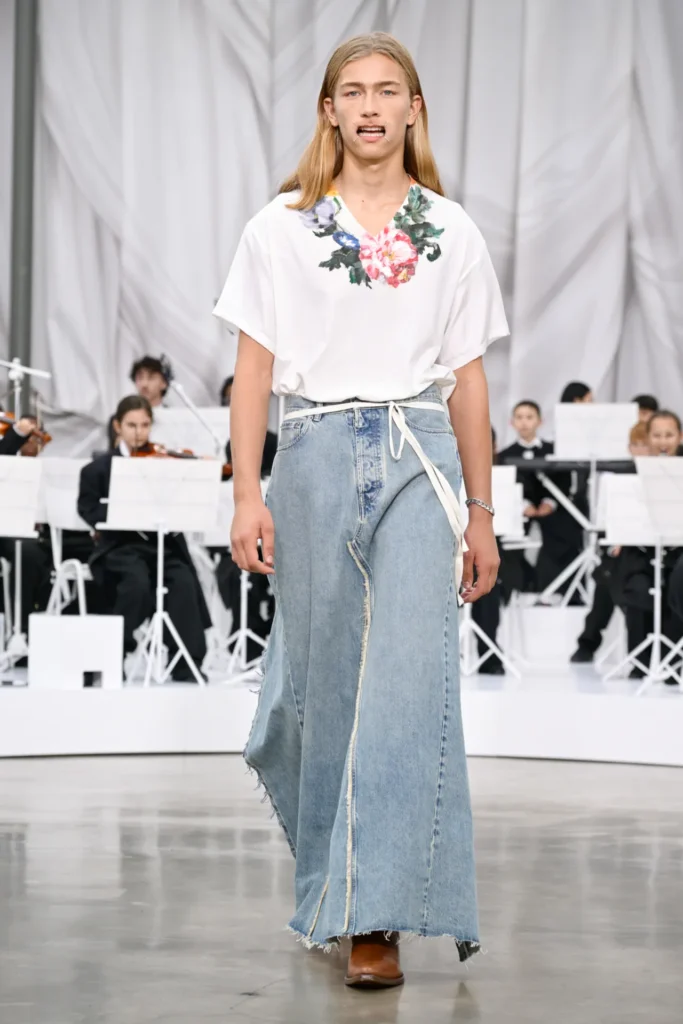
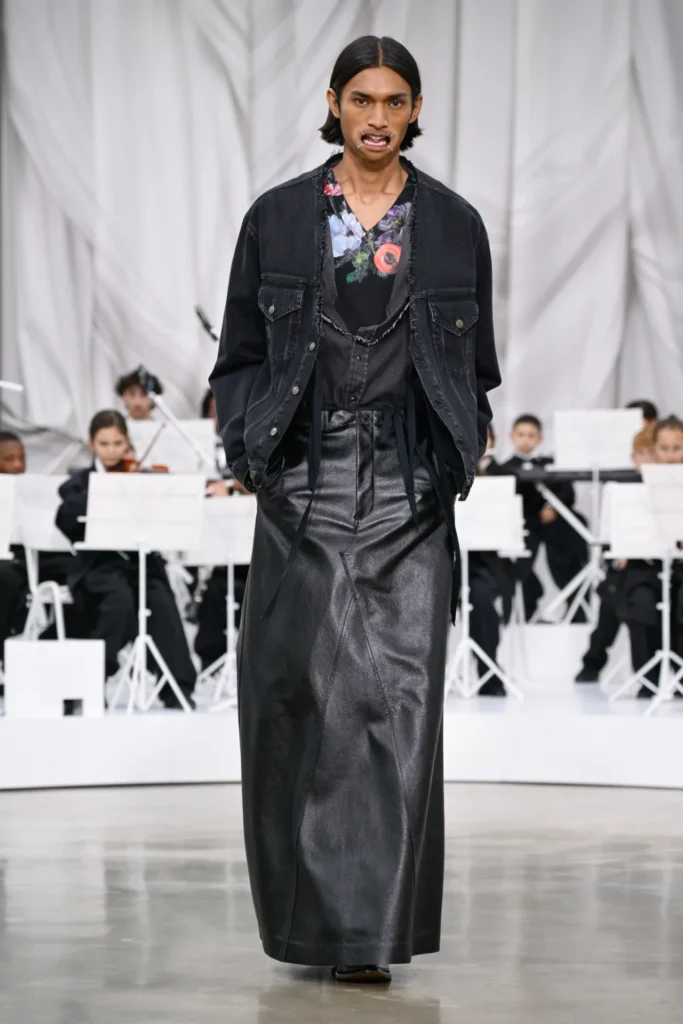
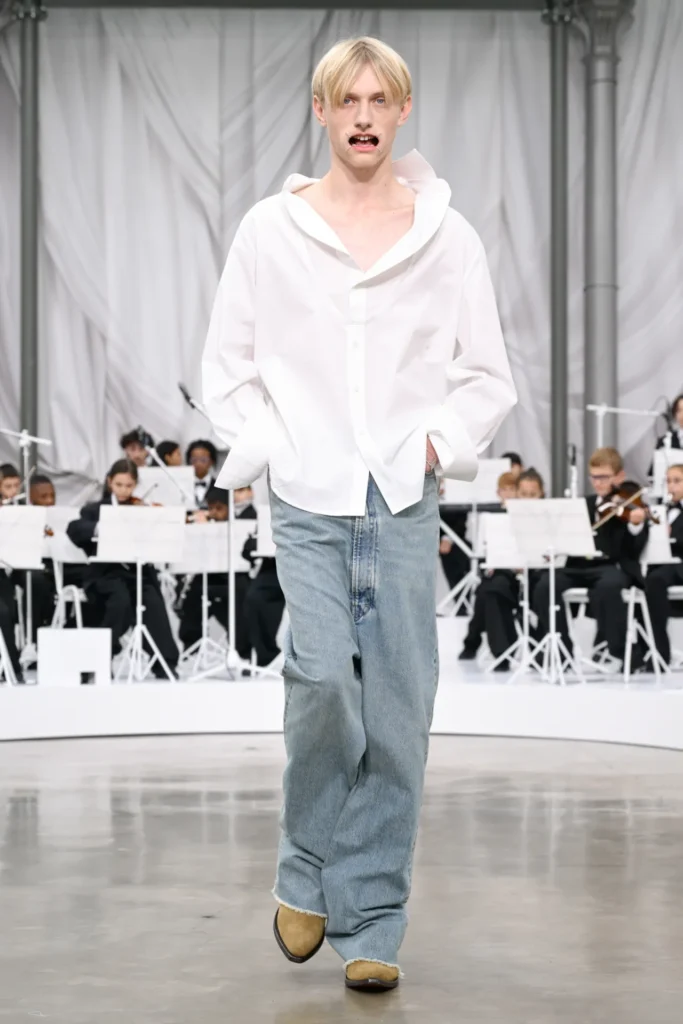
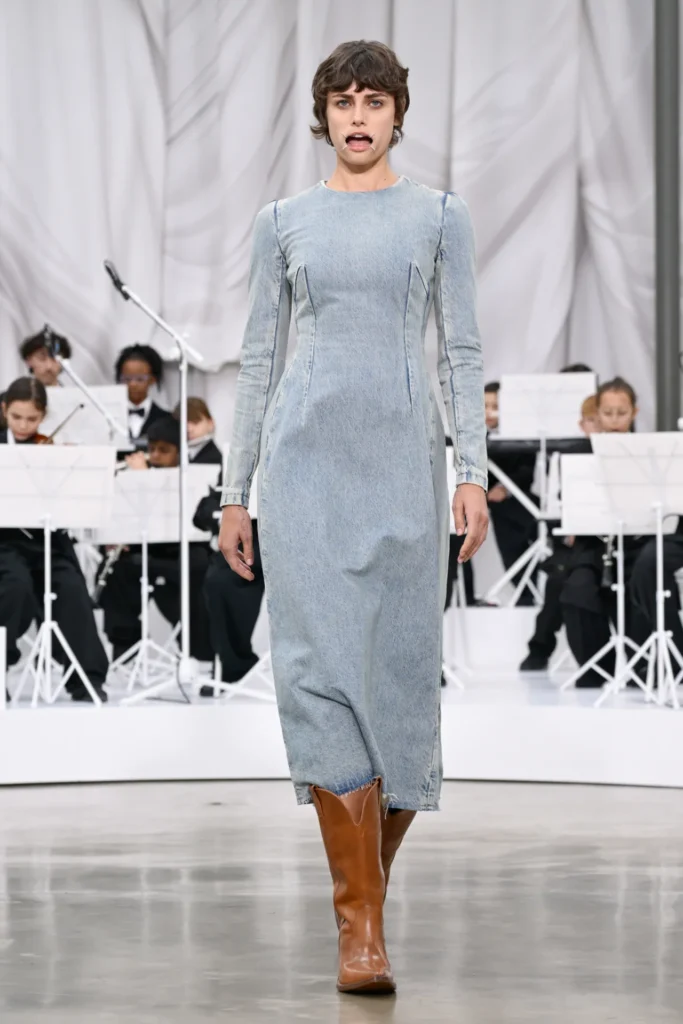
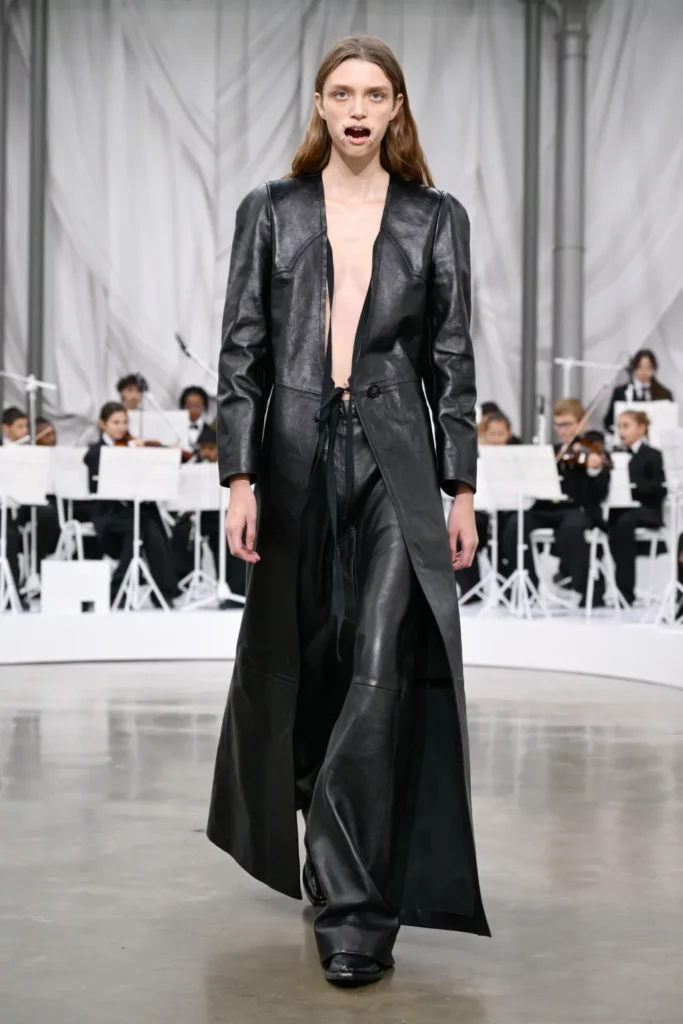
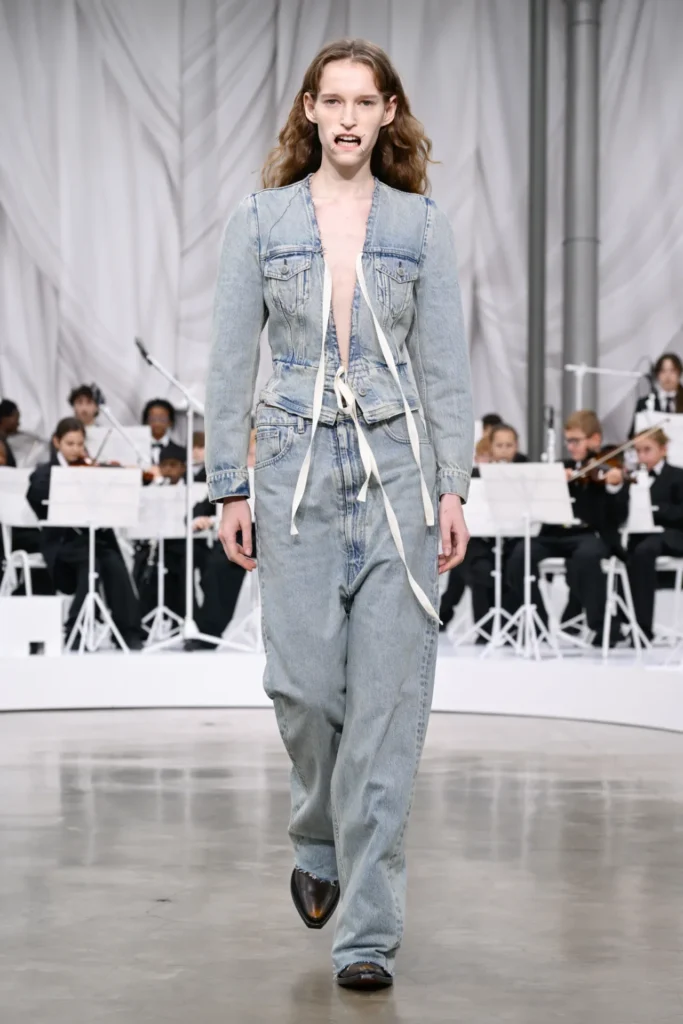
Set in a stripped-down Paris venue, the show opened with a moment of pure charm: a group of local children, dressed in oversized black suits, gathered in the orchestra pit to perform playful renditions of classical music. Even Kim Kardashian and Kylie Jenner couldn’t resist an audible “aww.” It was a tender prelude to Martens’ meditation on uniformity and subversion.
Martens revisited the house’s founding gestures — the off-kilter shoulder, the incomplete shoe — and pushed them into new territory. Jackets hung with a subtle slouch, shoulders tilting off balance, while he reinvented the “missing heel” shoe in variations ranging from boots to stilettos, turning absence into allure.
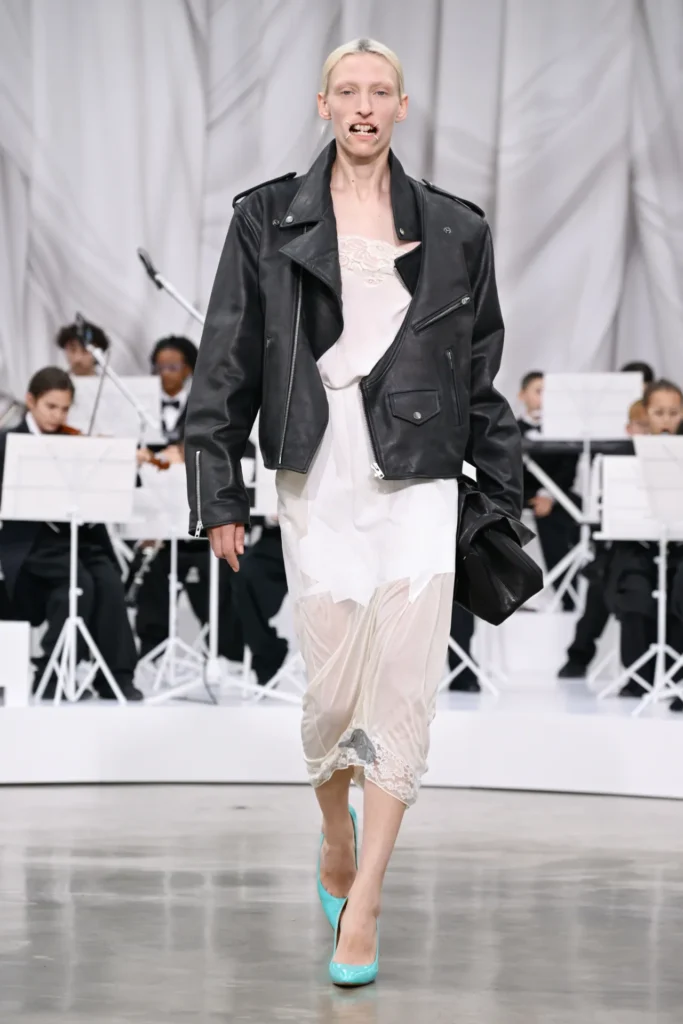
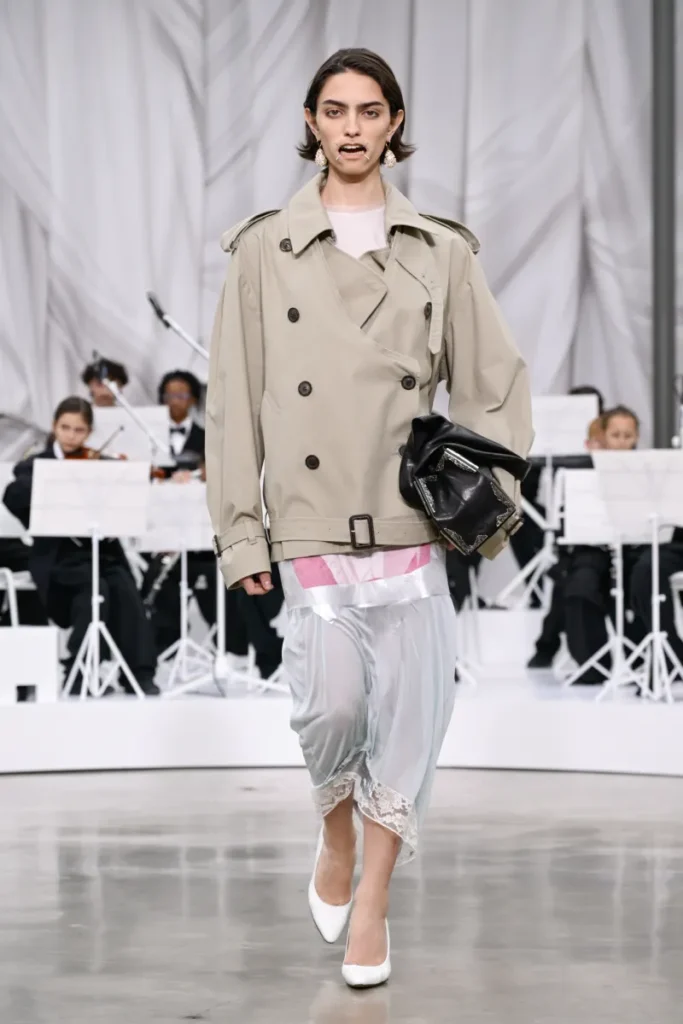
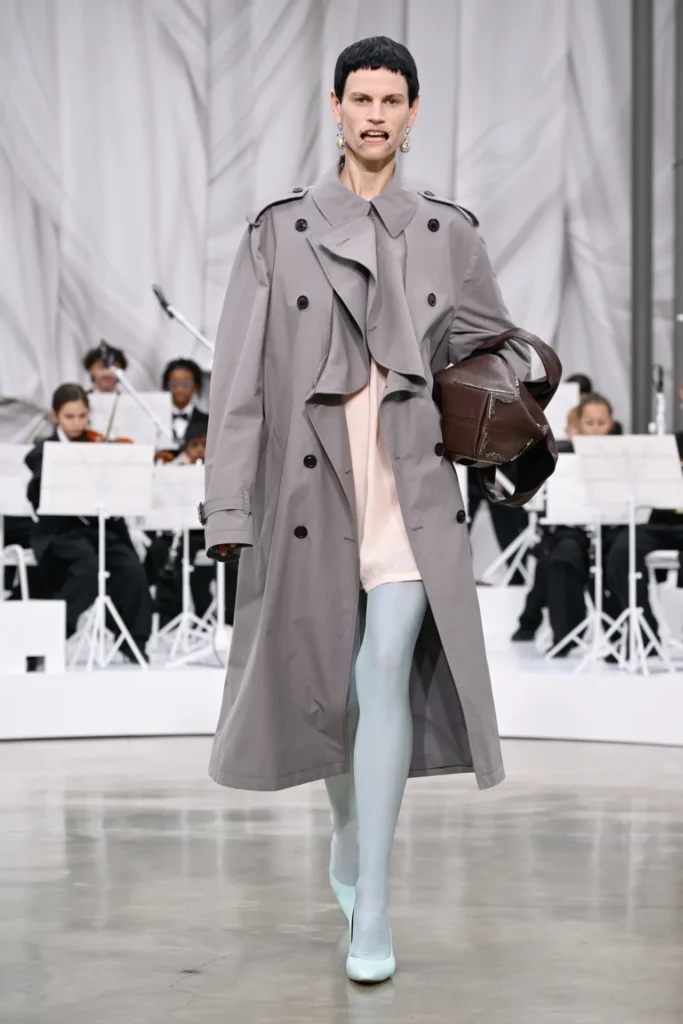
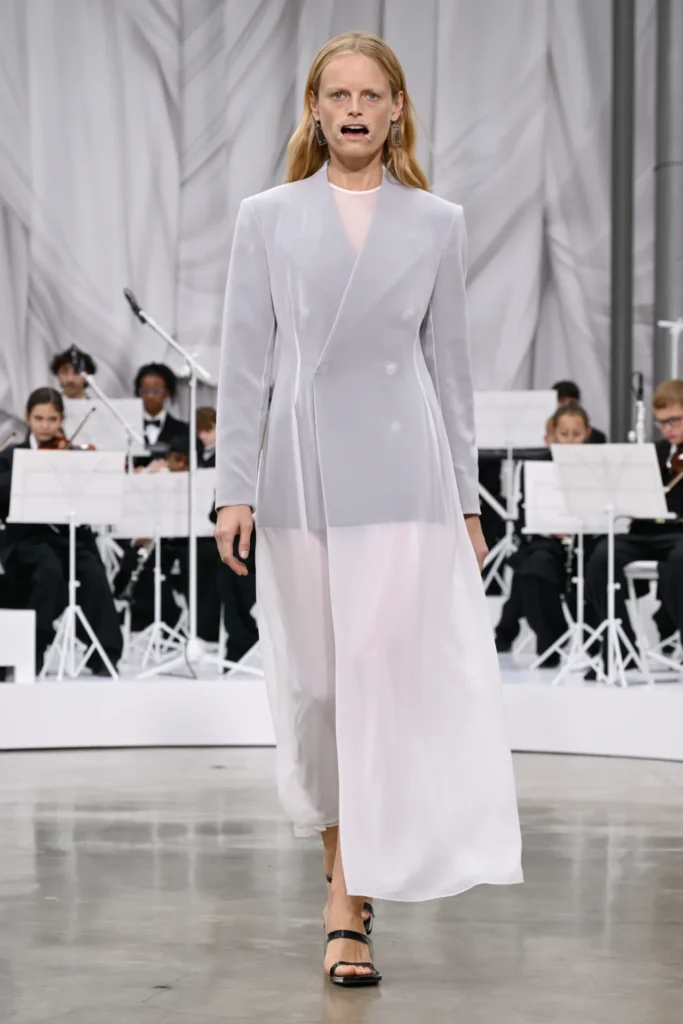
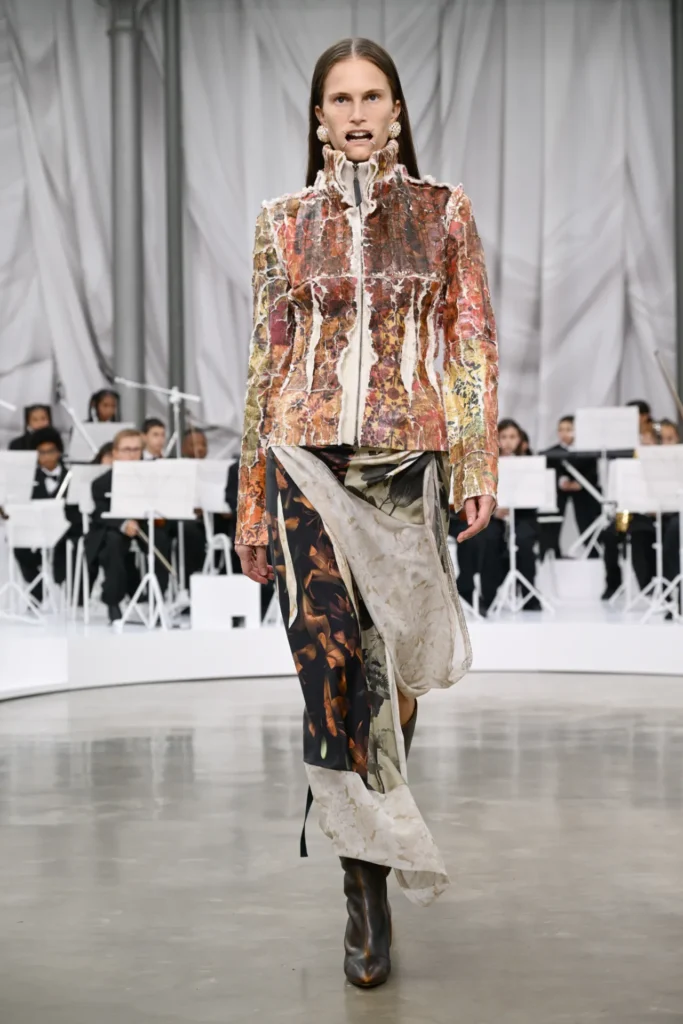
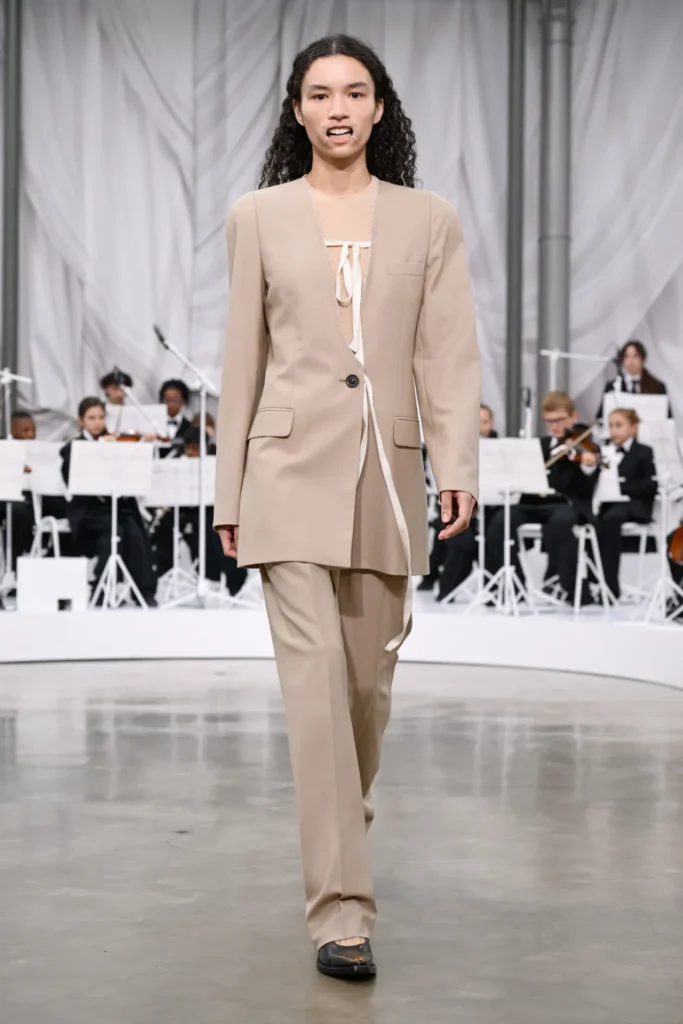
Tailoring — a Margiela cornerstone — was dissected and rebuilt. Lapels were sliced clean off trench coats and suiting, collars tucked inward, ties attached where seams once were, nodding to the white lab coats once worn by the brand’s atelier staff. Crisp poplin shirts appeared with inverted necklines, paired with low-slung trousers or slips fastened with silver tape.
The interplay between rigor and distortion defined the collection’s energy. One standout moment came with ghostly black gauze wrapping tailored jackets, leaving behind only their spectral outlines. Elsewhere, men’s blazers and coats bore fused silk scarves at the neckline, creating a surreal trompe-l’œil effect — an illusion that felt both romantic and unsettling.
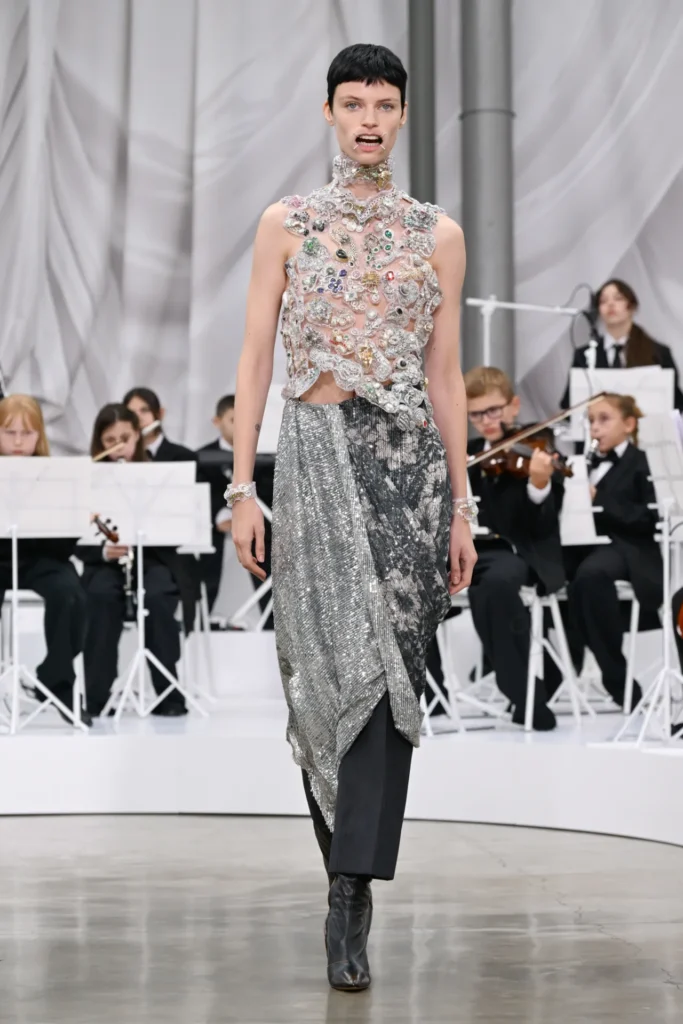
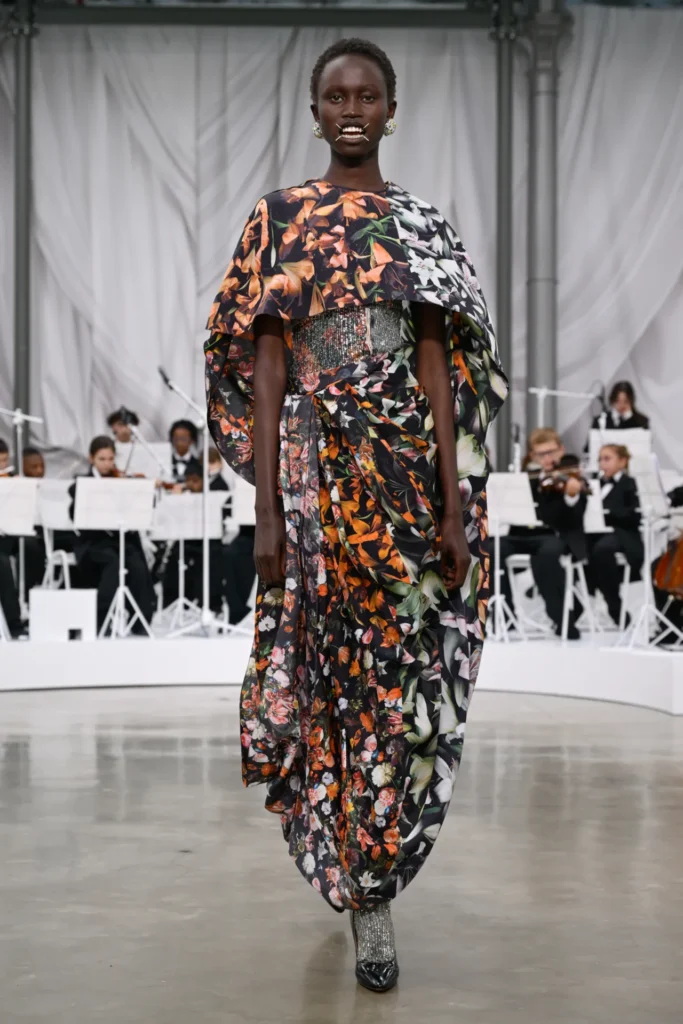
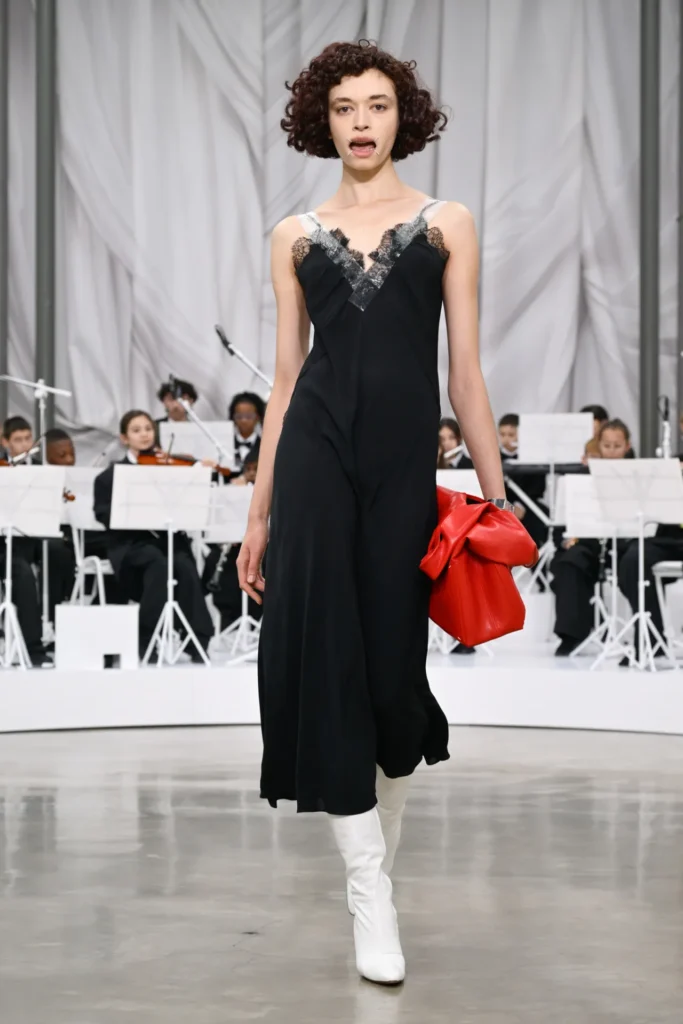
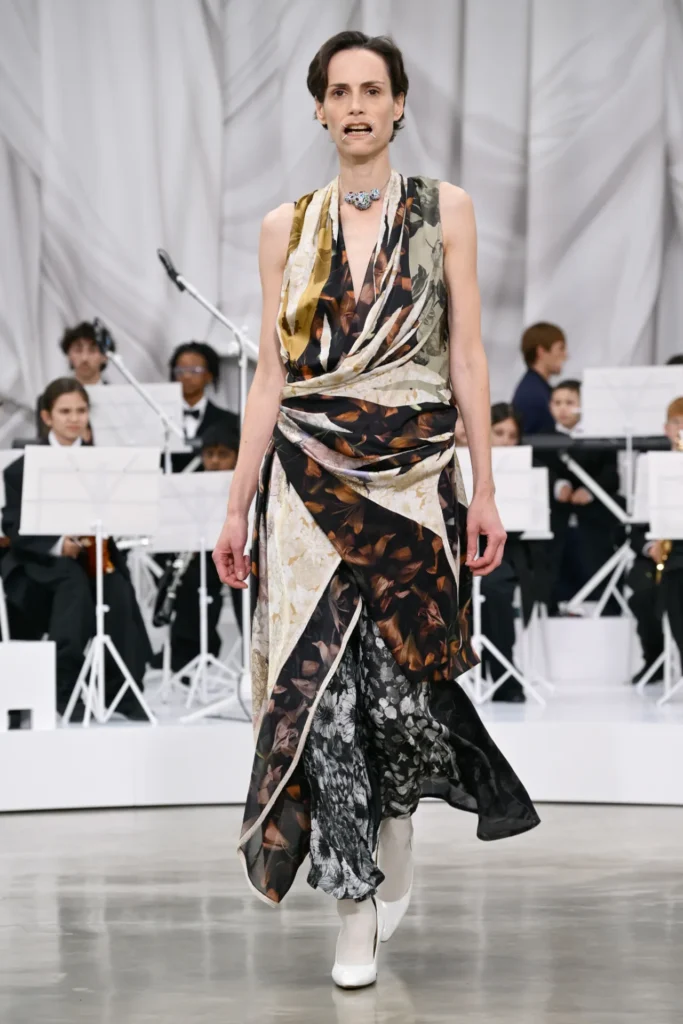
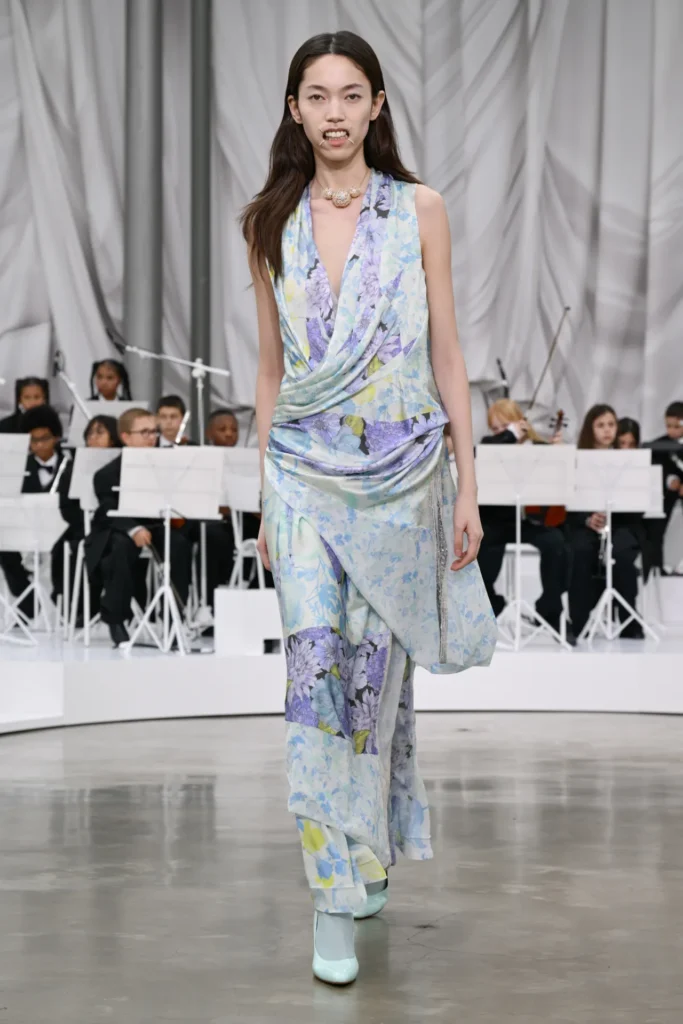
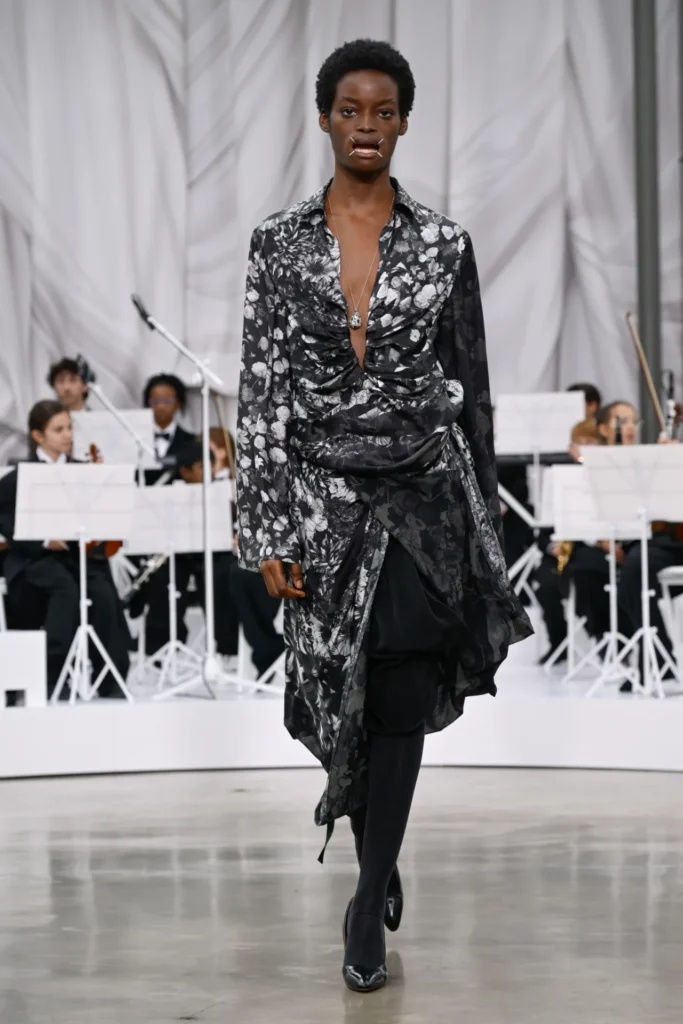
There was denim — raw, unwashed, utilitarian — and leather that felt lived-in rather than polished, grounding the more experimental pieces in a sense of urban pragmatism. Martens expanded the house’s vocabulary without betraying its spirit.
If the goal, as the show notes stated, was to achieve a “uniformity of expression,” then the decision to outfit models — including legends like Guinevere Van Seenus, Saskia de Brauw, and Hanne Gaby Odiele — with Margiela’s signature four-stitch mouthpieces was a bold, if controversial, interpretation. The visual was haunting, though some may argue it muted the individuality of the women behind it.

